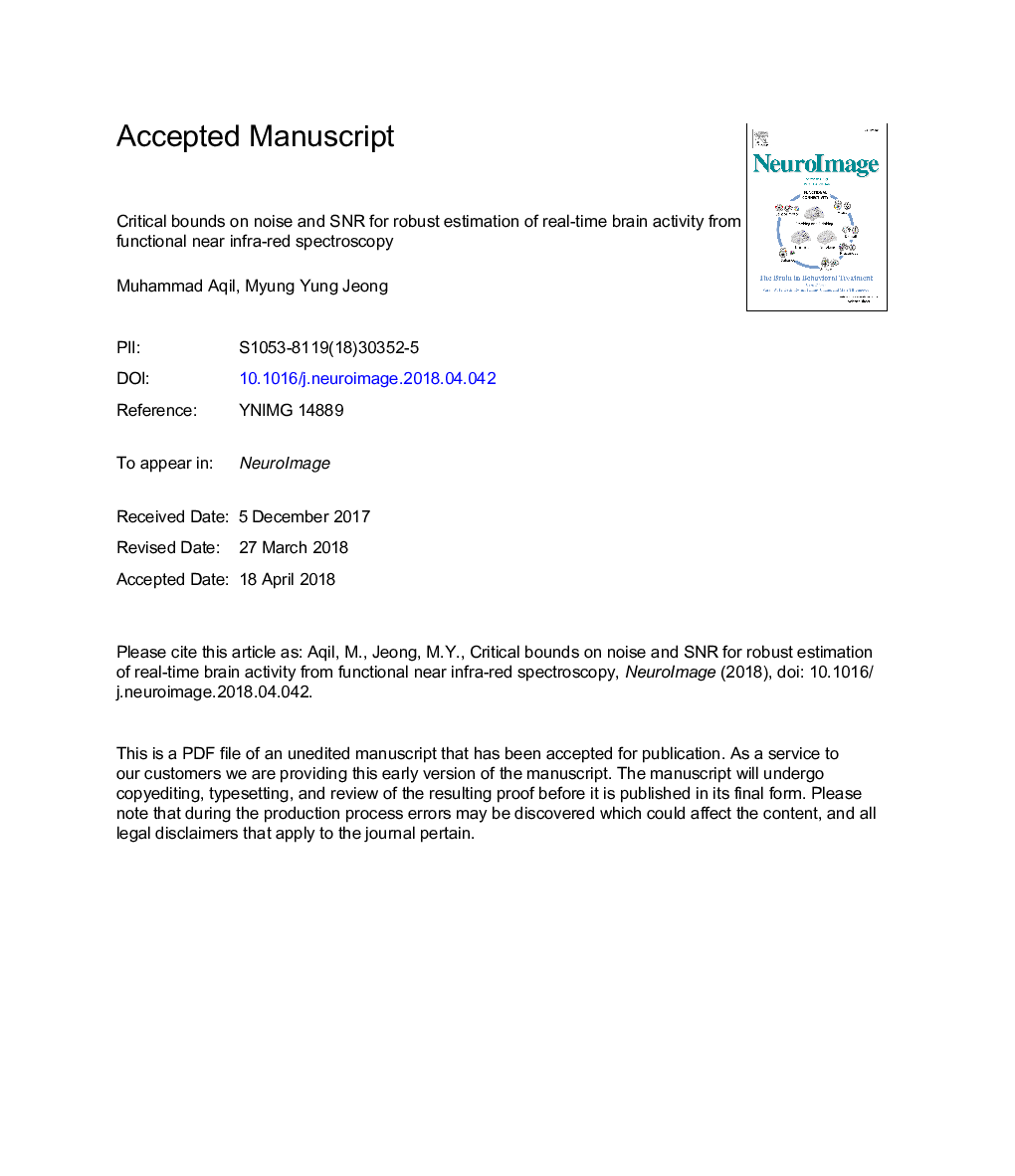| Article ID | Journal | Published Year | Pages | File Type |
|---|---|---|---|---|
| 8686837 | NeuroImage | 2018 | 75 Pages |
Abstract
The robust characterization of real-time brain activity carries potential for many applications. However, the contamination of measured signals by various instrumental, environmental, and physiological sources of noise introduces a substantial amount of signal variance and, consequently, challenges real-time estimation of contributions from underlying neuronal sources. Functional near infra-red spectroscopy (fNIRS) is an emerging imaging modality whose real-time potential is yet to be fully explored. The objectives of the current study are to (i) validate a time-dependent linear model of hemodynamic responses in fNIRS, and (ii) test the robustness of this approach against measurement noise (instrumental and physiological) and mis-specification of the hemodynamic response basis functions (amplitude, latency, and duration). We propose a linear hemodynamic model with time-varying parameters, which are estimated (adapted and tracked) using a dynamic recursive least square algorithm. Owing to the linear nature of the activation model, the problem of achieving robust convergence to an accurate estimation of the model parameters is recast as a problem of parameter error stability around the origin. We show that robust convergence of the proposed method is guaranteed in the presence of an acceptable degree of model misspecification and we derive an upper bound on noise under which reliable parameters can still be inferred. We also derived a lower bound on signal-to-noise-ratio over which the reliable parameters can still be inferred from a channel/voxel. Whilst here applied to fNIRS, the proposed methodology is applicable to other hemodynamic-based imaging technologies such as functional magnetic resonance imaging.
Keywords
Related Topics
Life Sciences
Neuroscience
Cognitive Neuroscience
Authors
Muhammad Aqil, Myung Yung Jeong,
